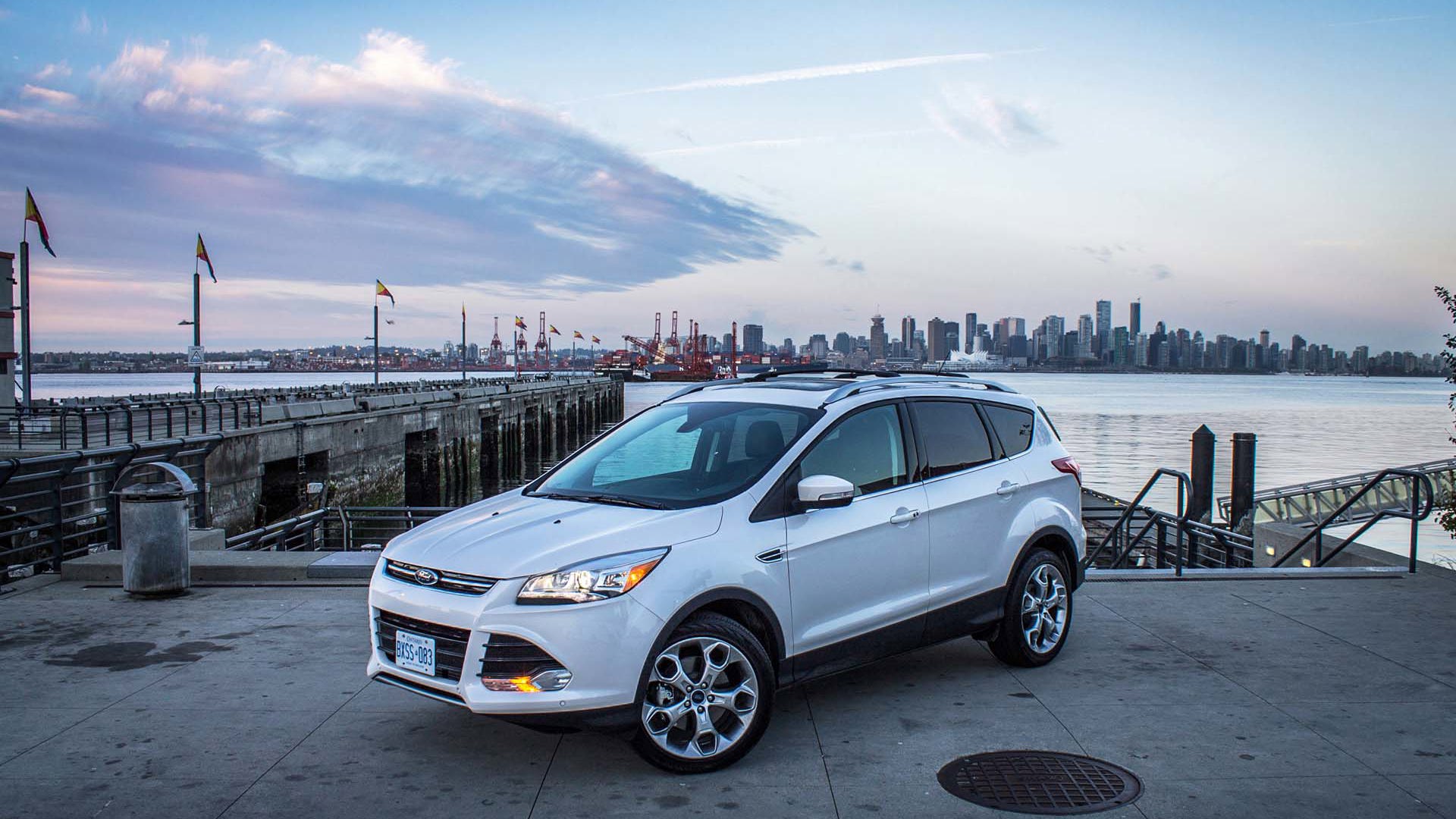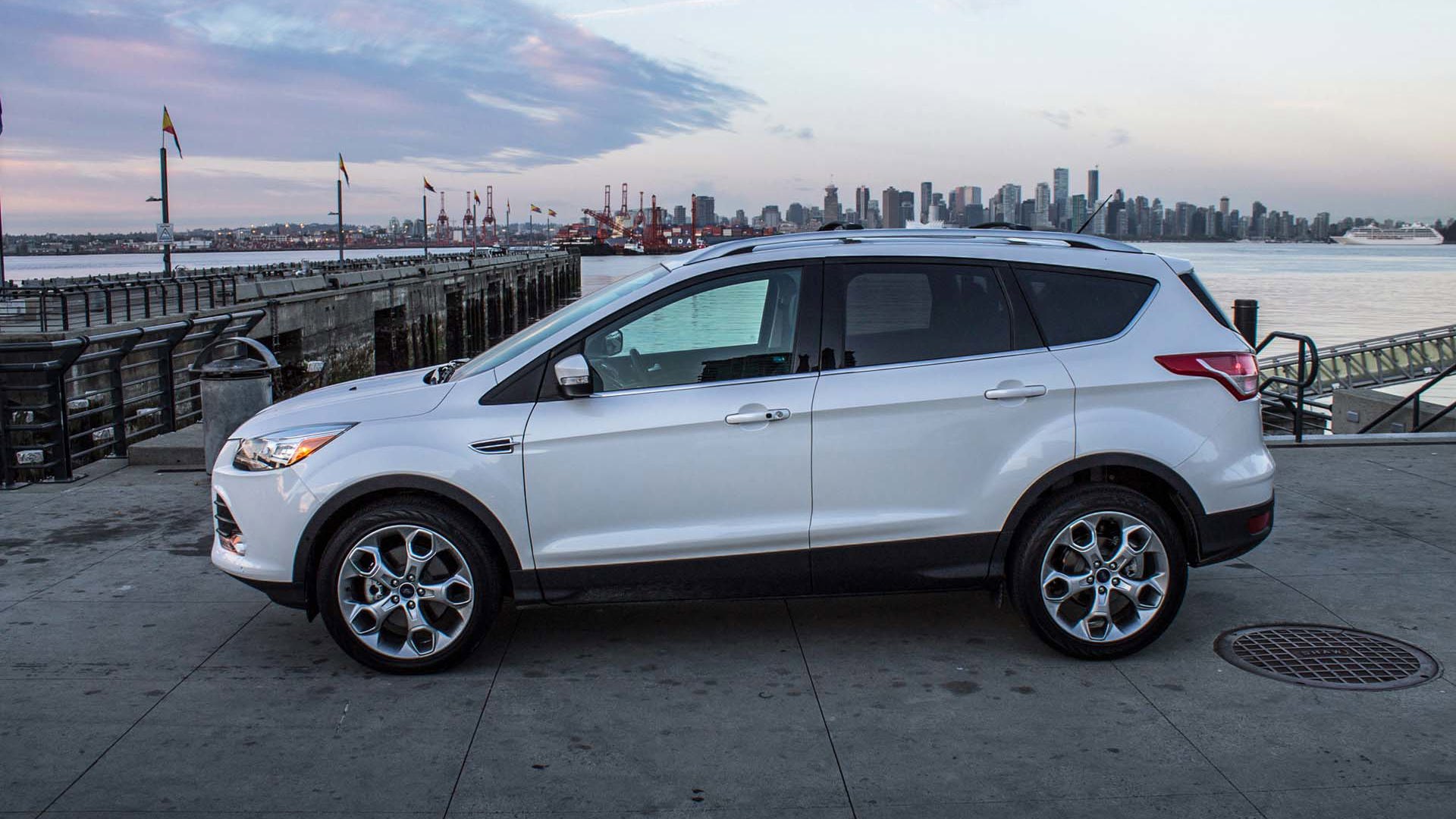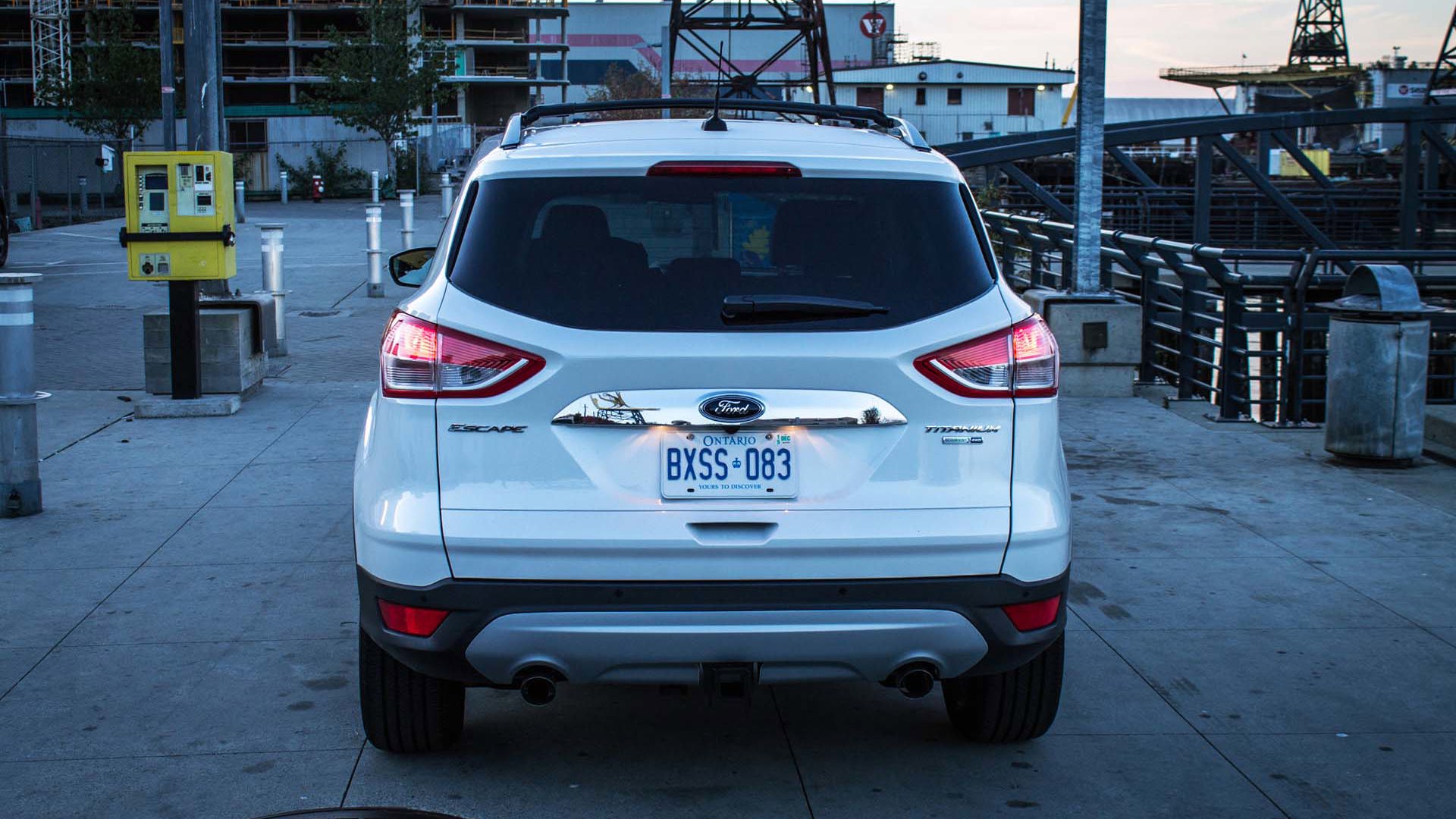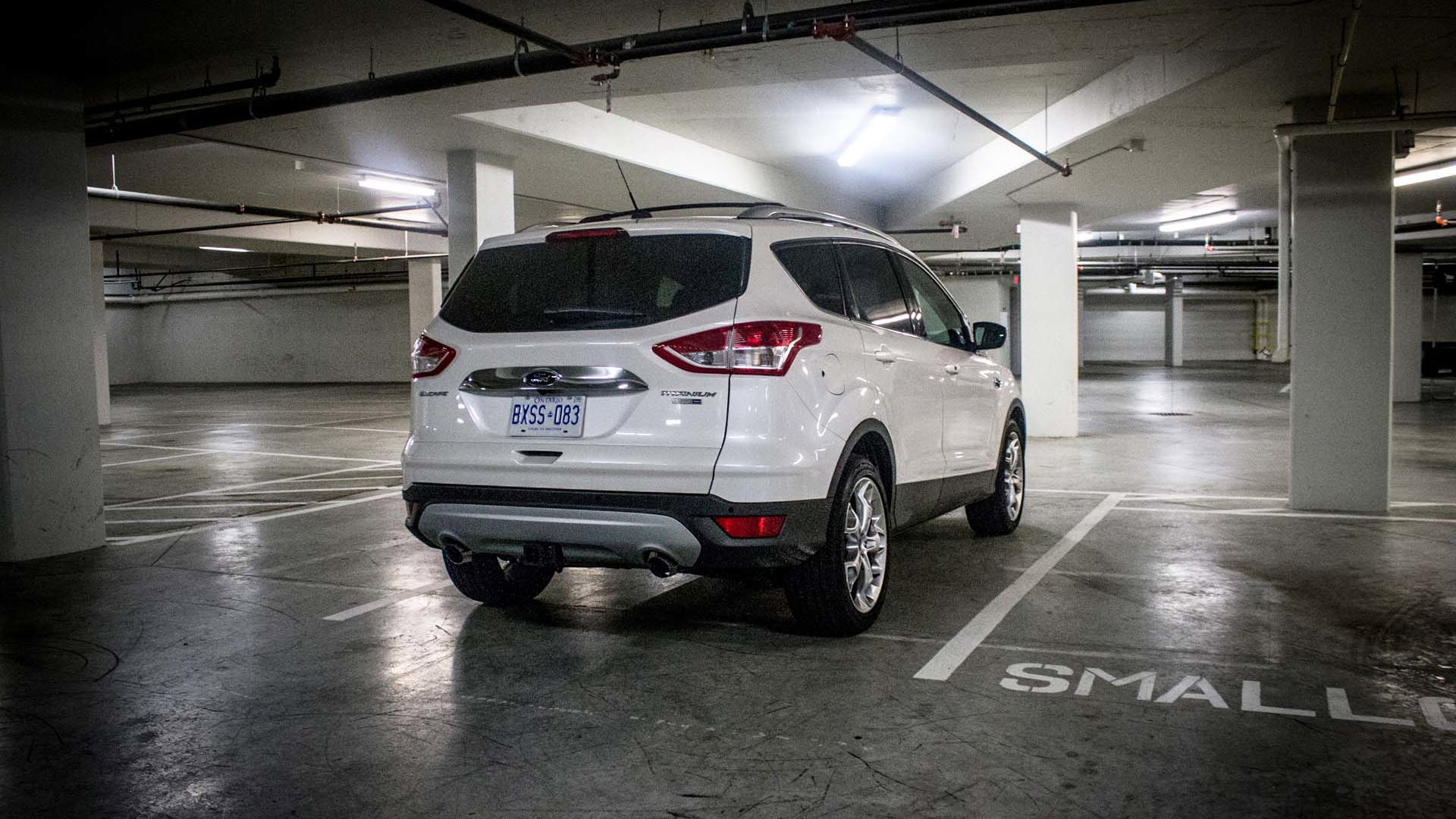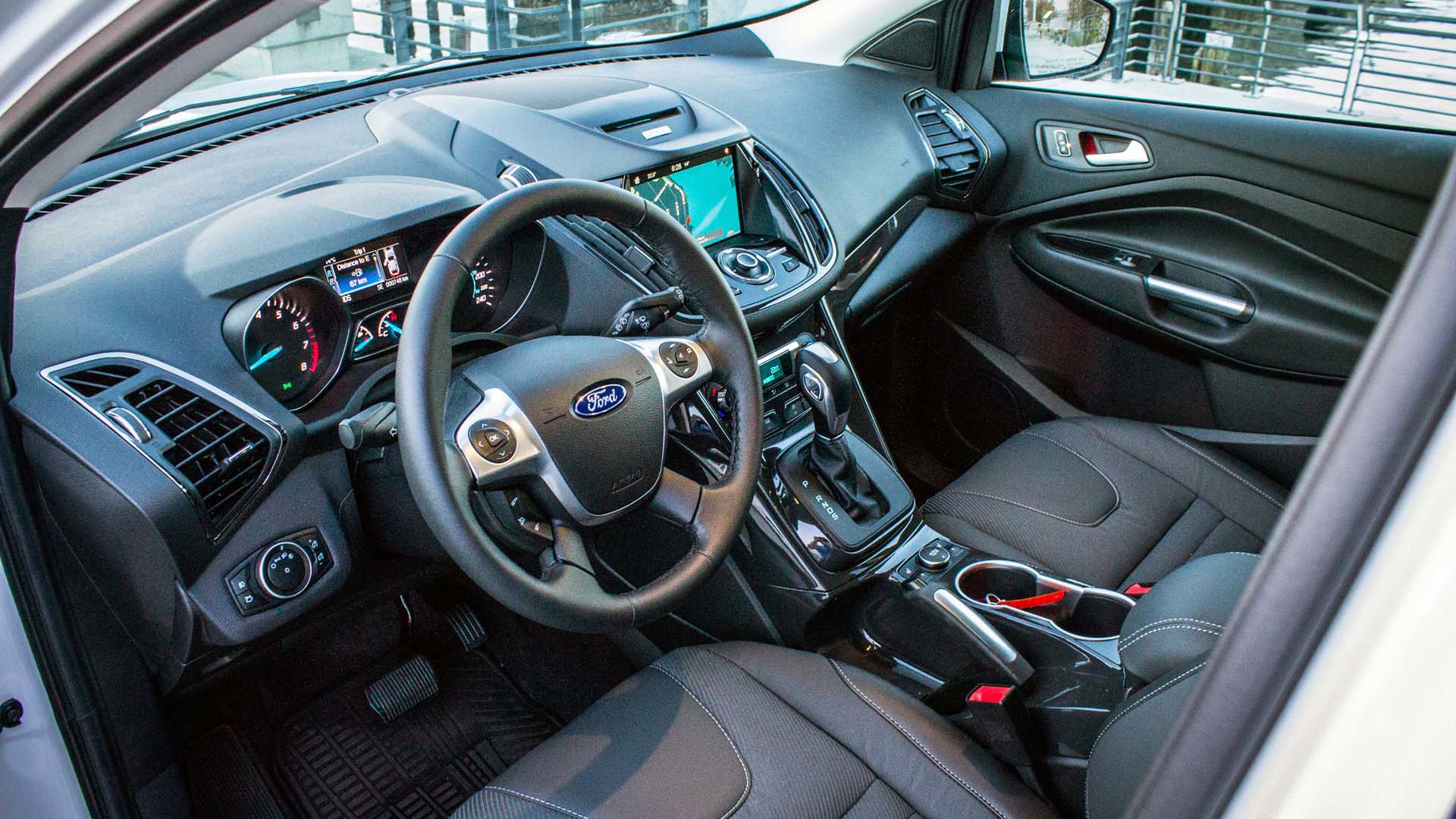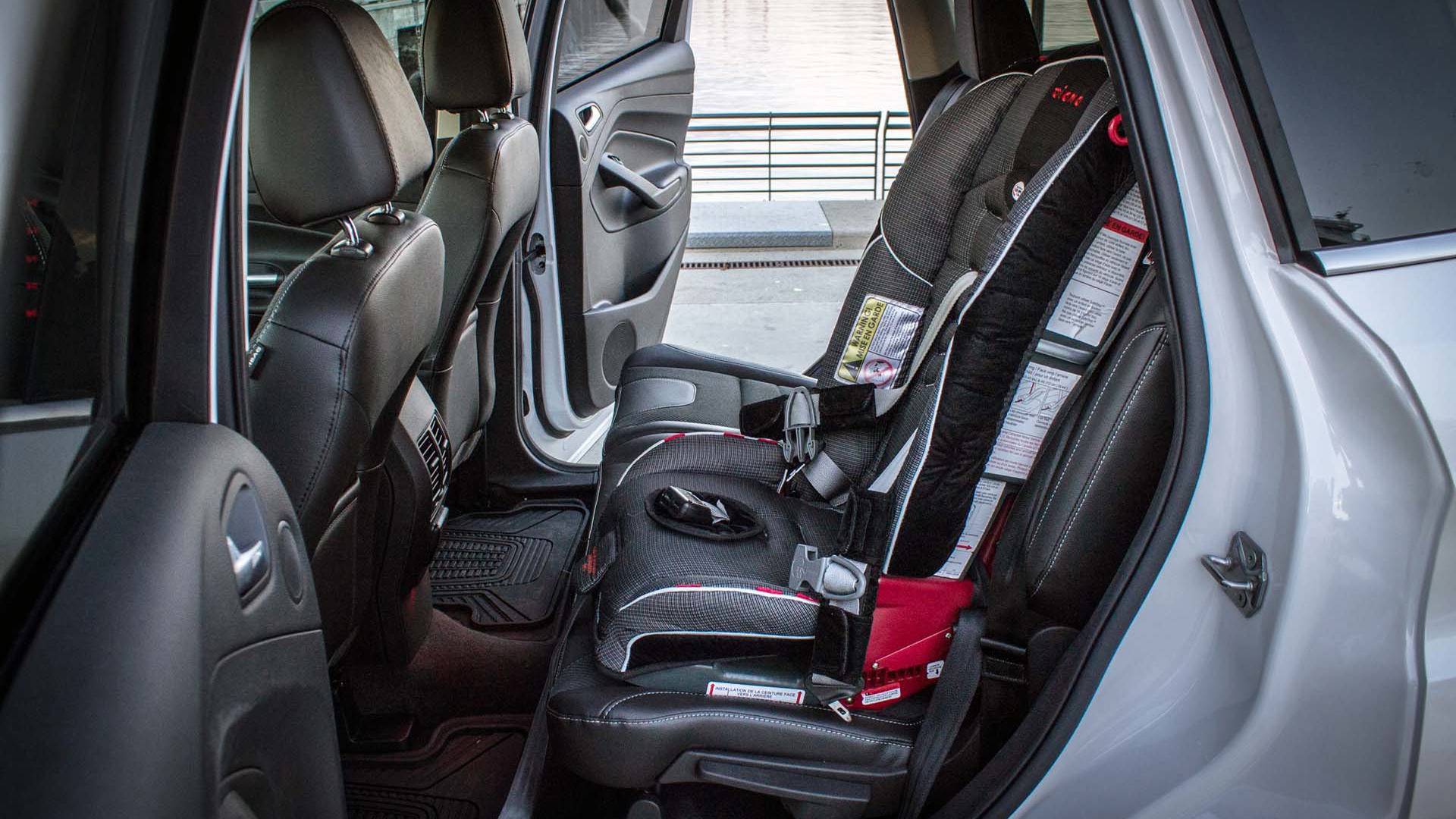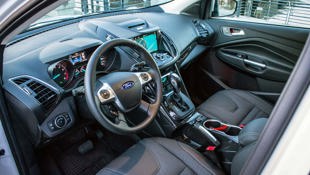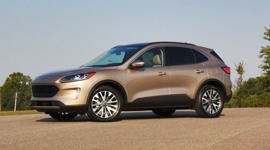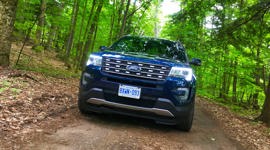 AutoTrader SCORE
AutoTrader SCORE
-
EXTERIOR STYLING7/10
-
INTERIOR8/10
-
PERFORMANCE8/10
-
COMFORT8/10
-
FUEL ECONOMY6/10
As far as naming a family vehicle goes, Escape is a pretty good moniker. Check it: Edge for urban style, Explorer for the off-roading it'll almost certainly never do, Flex for the way it contorts between minivan and wagon, and Expedition because a couple of fuel-ups could pay for a trip to the Amazon river basin.
When you've collapsed beside your spouse at the end of a long day and are staring around at the drifts of stuffed-toy detritus, an Escape is just what you need.
But Escape, man, that's genius. When you're up to your elbows in diapers, when both kids have gone scream-o like a couple of linked smoke detectors, when you've collapsed beside your spouse at the end of a long day and are staring around at the drifts of stuffed-toy detritus, an Escape is just what you need. Get out of the house. Hit up a park. Drop them off at Grandma's house. When you've got kids in your house, sometimes your vehicle becomes the only refuge you've got.
To that end, the Titanium edition of the Ford Escape takes the recipe for a small crossover – the new mammalian species out-competing the getting-stale-and-scaly family sedan – and adds plenty of gadgets to make life more bearable. No, they haven't added ceiling-mounted Thorazine dart guns, rear-seat sleeping gas dispensers, or a deployable soundproof passenger divider (despite my repeated letters and/or drawing of same), but Ford has crammed this little everyday getaway full of technology, up to and including an updated Sync.
On the exterior, not much has changed for the 2016 version of the Escape. It still is to the Focus what the Cayenne is to the Porsche 911: bigger, more grilled, plumper, taller. Chrome exists in abundance, and this one has both the optional $550 pearlescent paint and big 19-inch alloys to better exude the sense that this is a cut above your usual people mover.
It's all very Euro-Ford, but remains slightly homely, not quite the looker that Ford's managed to turn the larger Edge and even more mainstream stuff like the Focus into. I'd expect a more Aston-Martin-ish face to be in the pipeline for an upcoming model; for now, the side-profile shows the Escape to greatest advantage.
Inside, the Escape is surprisingly sporty. The seats are very well bolstered for this class of vehicle, and as the layout is very similar to the Focus – already a relatively driver-focused machine – it’s got far more of a cockpit feel than the utilitarian box of the old Escape. Heck, that's even a real handbrake: when's the last time you saw one of those in a crossover?
Time for a rematch? Comparison Test: Compact Crossover SUVs
Titanium models are very well equipped, but even so this tester came with some pricey-but-nice options, most notably the huge panoramic sunroof. It also came with satellite navigation and infotainment (more on that in a bit), rain-sensing wipers, parking assist, and even a self-parking mode.
Probably the biggest change, and the one that will have you skipping deals on 2015 models and waiting for the 2016 is the new, updated Sync infotainment and navigation. Now incorporating pinch-to-swipe tech like that found in some newer Subaru offerings, it's easier to use and easier to read than ever. Further, it's also a sight quicker to react, and the voice command system works very well. Screen placement is still a bit of a stretch forward, but overall this is a huge improvement over what was previously something of an Achilles' heel for the Escape.
Rear passengers have plenty of room in the rear of the Escape, and I found fitting a car seat to be a straightforward procedure without surprises. Adult passengers will find the seats perfectly acceptable, but if your family is growing, you'd be best off looking up the Ford range for something with a little more legroom.
The Escape's capacity for cargo is quite good, 971 L behind the rear seats and 1,920 L with them all flat. There's even an automatic rear tailgate, one that you shake your leg underneath to activate; Hyundai's just-stand-there solution is a little easier to use as it often took an impromptu can-can for the little Ford to figure out what the hokey-pokey was all about.
Both a Honda CR-V and Toyota RAV4 will slightly edge out the Escape in carrying capacity, but they're missing some of these higher level features and there's something else too. Under the Escape's hood is a choice of three powerplants, two of them turbocharged and far exceeding the Japanese competition (apart from the Forester XT) in quickly available forced-induction torque.
Titanium models only come with the 2.0 L Ecoboost option, which runs on regular-grade gas and produces a respectable 240 hp and a stout 270 lb-ft of torque. Torque peak is available from 3,000 rpm, but you get a hefty lump of it down low as well, so the Escape is very responsive. A six-speed automatic transmission is the only option across the entire Escape range, front-wheel-drive or all-wheel-drive; and with the 2.0 L's readily available thrust, it's very well-behaved.
Most Titanium Escapes will come with Ford's all-wheel-drive system, which is far more about on-road traction than off-road hijinks. If you want to, I'm sure the Escape's reasonable ground clearance would let you tackle the odd gravel approach to your favourite hiking trail, but more than anything, the Escape drives like a jacked-up Focus.
Actually, it drives a lot like a jacked-up Focus ST, one equipped with all-wheel-drive for better grip and an automatic for better urban manners. Off the line punch is plentiful and passing power more immediate than you'd find in a V6.
Further, the Escape comes with Ford's torque-vectoring differential – not a true mechanical diff, this senses understeer caused by going into a corner too hot and clamps an anchor on an inside wheel, hauling the Escape around on a pivot. It's a relatively transparent system, and only really bad decision-making seems to prompt it into action.
Part of that's due to the 235-series all-seasons adorning the Titanium's 19-inch boots (you can get these on SE models as well), which provide really decent levels of grip. While rollier than the Focus upon which it's based, the Escape has plenty of poise through the corners, and can be driven really quite quickly indeed.
This is the reason that the family sedan is on the way out: when you can buy a pseudo-wagon with a higher ride-height and suffer nearly no real-world handling penalties, why would you suffer through life trying to cram strollers and bags into a trunk? For all intents and purposes, the Escape isn't much slower in street driving than a CVT-equipped WRX would be, and it rides far better, even with those 19-inch alloys.
It's just a half-step or so behind the Mazda CX-5 in driving dynamics, and comes with considerably more power. The one drawback is, of course, the Ecoboost engine's fuel economy. Official ratings are set at 11.4 L/100 km in the city and 8.4 L/100 km on the highway; I suppose it might be possible to hit these figures under ideal conditions, but start dipping into the boost for on-ramps, in-traffic shunting, climbing hills, and just general everyday use, and consumption quickly climbs. Over the course of the week, I averaged 12.5 L/100 km or so, about 10 percent worse than suggested mixed-mileage.
But on the other hand, the Escape always had a surfeit of power, handled any cornering duties with alacrity, and felt like a lot of car despite its small footprint. The price tag for all this was expensive, but a quick trip to Ford's own online configurator showed deep discounting – close to 10 percent – already on 2016 models; that's just how the blue oval chooses to sell its cars.
Overall, the Escape Titanium is better than just a nice place to be; it feels like a bit of a reward. Dreams of sports cars in the garage will have to wait for a while, so why not have a little added content in your day-to-day machine.
| Warranty: 3 years/60,000 km; 5 years/100,000 km powertrain; 5 years/unlimited distance corrosion perforation; 5 years/100,000 km roadside assistance Competitors: |
| Model Tested | 2016 Ford Escape Titanium |
|---|---|
| Base Price | $34,599 |
| A/C Tax | $100 |
| Destination Fee | $1,690 |
| Price as Tested | $41,689 |
|
Optional Equipment
$5,300 - [301A Equipment (Blind-spot monitoring, Bi-Xenon headlights, rain-sensing wipers, front and rear parking assist) – $1,750; Platinum White paint - $550; 19-inch alloys - $650; Touring pkg (Navigation, Sony audi, Panoramic roof) - $2,000; Sport seats - $350]
|
|
